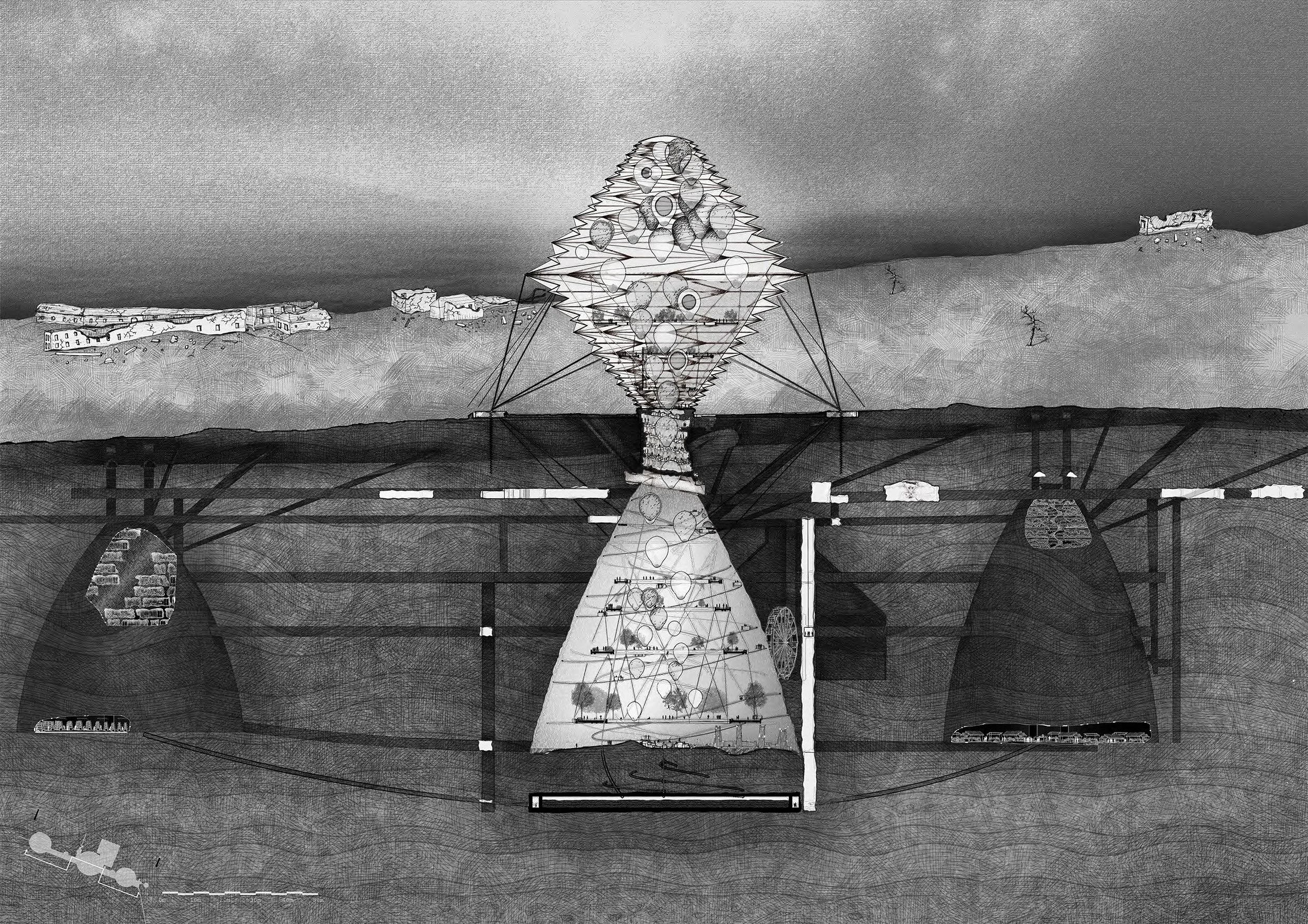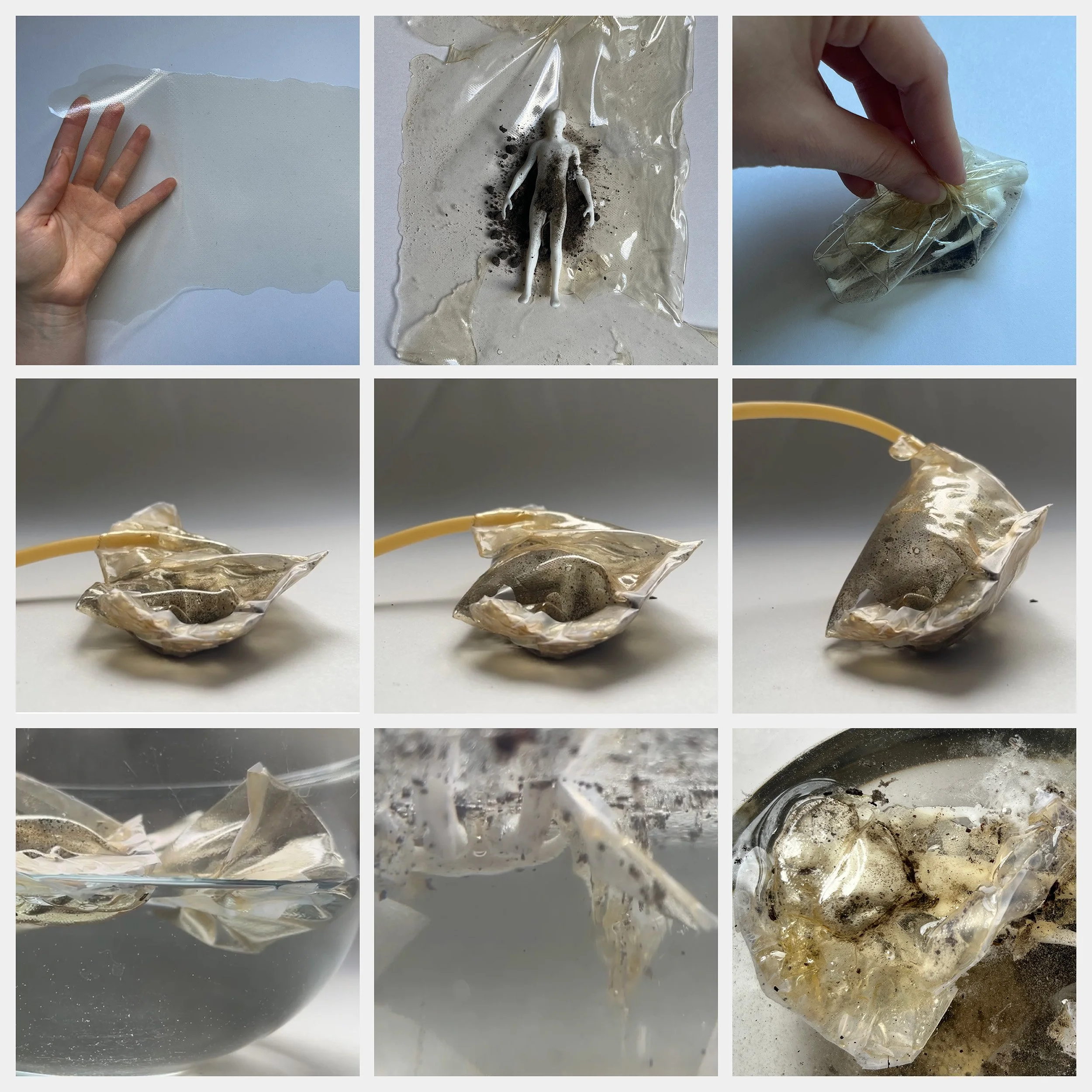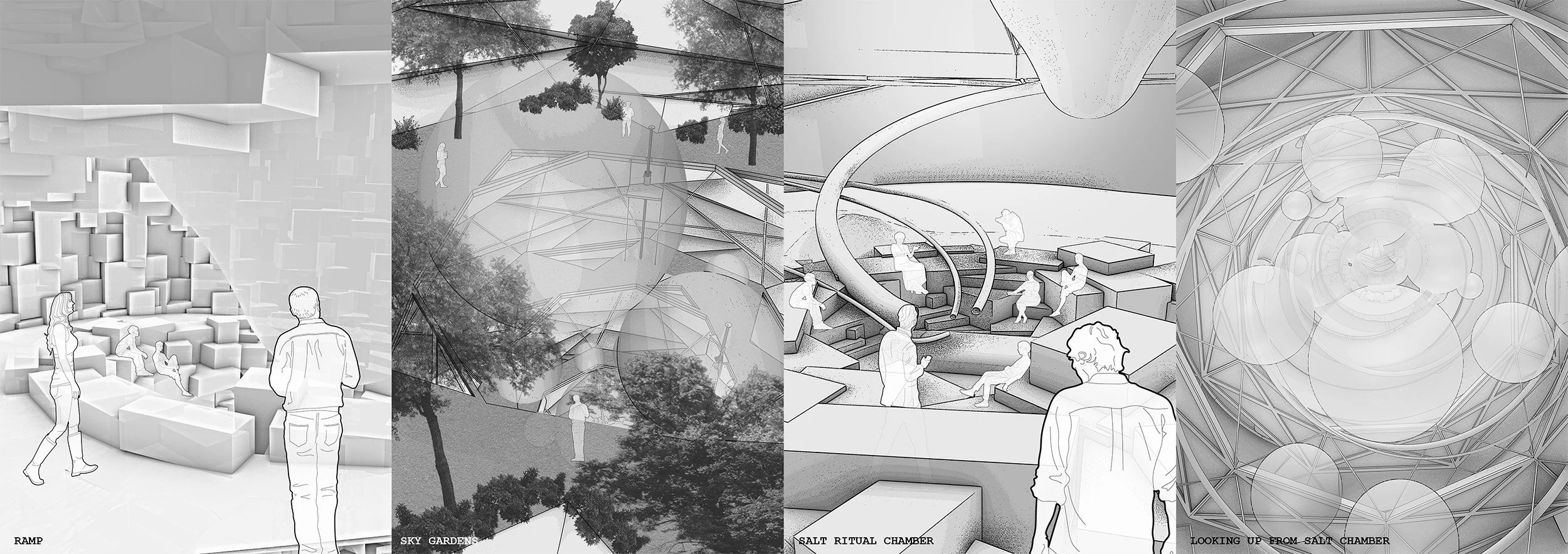DS06 Entangled Architectures
To survive on Earth, we must learn how to land gently on its surface and integrate within entangled layers. We approach architecture as an act of humility, where design responds to the environment’s needs, adapting to its vulnerabilities rather than imposing upon it.
Our studio operates at the confluence of environmental justice and biocentric design, seeing ecological crisis not as a wall but as a doorway to reimagined futures. We read every site as a living tapestry of geology, species, climate, and memory, and ask how architecture might weave rather than sever those threads.
Taking Donna Haraway’s invitation to “stay with the trouble,” we mix contemporary science with vernacular knowledge, honouring materials as sentient archives that carry sap, dust and labour across time. Clay quarried on Monday still remembers the river; steel melted from scrapped rail holds the echo of journeys. When such collaborators speak, design listens, repairing the damage of extractivism and redistributing agency to lichen, bat, child and migrant alike.
Our projects slide from watershed to brick joint, choreographing seasonal floods, root networks and human rituals into adaptive forms that weather, moult and regrow. Storytelling, speculative film, forensic drawing and sensor-driven prototypes enable us to test these futures before we pour foundations. Looking beyond the Anthropocene — where buildings become vibrant prosthetic ecosystems — we practise landing gently today so that tomorrow’s Earth can bear our weight.
Tutors: Alexandra Lăcătușu & Maria Faraone & Toby Smith
Guests: Alex Towler, Alice Whewell, Anete Salmane, Jason Coleman, Kiril Kuzmanov, Max Lewis, Nikoletta Karastathi, Oscar Brousse, Raha Farazmand, Thomas Parker, Toby Shew
Students: Alex Burns, Divya Vura, Ellen Shaw, Hazri Mohd Razali, Izzatun Munirah Abdul Latiff, Lucy Monk, Nina MacDonald, Pramila Cox-Sehmi, Predeepa Rajendran, Shefa Quazi, Vishal Gubbi Rajesh, Wai Shing (Frank) Li, Yik Ting Tan, Zhi Ying Lim
Power of Witchcraft
Pramila Cox-Sehmi
This project explores the theory of ecofeminism, analysing our perceptions of “the feminine” and its connection to the natural world and the built environment, through a narrative of witches.
Witches, historically seen as both powerful feminine figures and guardians of deep ecological knowledge, were systematically persecuted, severing a vital connection between humans and nature. This project envisions an alternate history where a spell prevents the witch trials in Romania, allowing a powerful and matriarchal society of witches to emerge and flourish. By examining a single space at four distinct moments across 500 years, the project speculates on how this society might exist and evolve in contention with the patriarchal world growing around it. Through a series of explorations into the power and influence of spaces, and what makes a feminine space, the proposal offers a spiritual refuge. A building that grows from the ancient and grounded knowledge of the witches into a fluid series of spaces that expand and contract, allowing for the ever-changing uses of the space that follow the natural cycles of the moon and the seasons.
The building evolves in response to the city that is built around it, and the architecture around it changes in response to this sacred space that existed before the city. Each layer is founded on sustainable building practices of the time. From vernacular earth building techniques, up to new technologies in inflatable spaces that allow the building to evolve and change throughout the lunar month. From a quiet and private sanctuary for witches to use only, to start to open out toward the public square to make spaces. For teaching and workshops to share their knowledge of hormone healthcare and medicinal plants. To fully opening out to make a bigger open event space for festivals such as Ostara which celebrates the spring equinox, as well as other celebrations, and protests when necessary.
Rooted in ritual and rising through resistance, this project becomes a spiritual, ever-shifting covenstead — a warm and welcoming space, like a mother’s womb, attuned to the rhythms of nature, reinforcing the power and voices of women, and casting its transformative influence across the world around it.
“This project was an opportunity to investigate a very little researched area of the built environment. As a young, mixed-race woman it was a very personal exploration into the way spaces make me, and other women feel, how the ongoing dominance and violence of the patriarchy tranlsates into built spaces and how we experience the world every-day. I believe that every project architect should challenge norms and think more holistically about it's users, crucially through participatory design, to be able to create spaces that really bring inclusive joy.”
Changing Phases
Feeling and Sense
Festivals
Ground Floor Plan
Growing Spaces
Impact
Layered Story
Physic Garden
Rituals
Timeline Inflection
Lobster Revolution 1989-2024
Frank Li, Wai Shing
Through the research of lobsters, we learned that the lobster is a very resilient and strong creature. What if we used these key ideas in the context of the Romanian Revolution in 1989? How would it work? How could it help protect a building, even when it goes through one of the toughest times in history?
Also, the lobster’s molting process brings out two philosophical meanings: evolution and death. Every lobster must molt to adapt to bodily changes, but as they age, each molting process becomes more exhausting and dangerous, sometimes even leading to death. This symbolizes the struggle between transformation and survival, which mirrors the revolution’s challenges and consequences.
After that, the building suffered major damage. By finding fragmented materials such as metal and hexagon elements—learned from the lobster’s structure—we can restore the building. This will provide a space where people can look back on the events of 1989 in Timisoara Romania, and discover the cracks of history within the Palace of Culture.
Finally, on December 20—the day Timisoara was declared free—the Palace of Culture could be lit with a warm light shining from within. It would be a symbol of hope and memory for the people who remember that important day in 1989
Exhibition space 2024
Floor Plan in 1989 Revolution of Palace of Culture
Historic restoration 2024
Lobster concept narratives
Palace of Culture 1989
Palace of Culture 2024
Palace of Culture section 1989
Palace of Culture under attack 1989
Rebel Headquarter in 1989 Revolution
Site analysis
Lifted By The Last Breath
Lucy Monk
It’s the year 2151. Scientific breakthroughs have allowed everyone to become immortal- “isn’t that wonderful” they all would cry, “no more death or ageing!”. However, by 2401, the once utopian experience had rapidly become dystopian with a lack of global resources, air, sea and land pollution at unprecedented high levels, and the climate spiralling out of control. What once was a moderate climate in Turda, Romania, has now become desertified, with daily high temperatures reaching 50oC. 2430 was the year immortality was reversed, people now living ‘normal’ length lives, allowing for an element of stabilisation to occur. With the temperatures so high, those that could travel, escaped down into the local salt mine, where temperatures never exceeded 20oC and they restarted their society with one key difference: they now welcome death.
After seeing the benefits of death and decay in the recycling of the nutrients back into the resources system and allowing new life to grow, the Huworms developed rituals over time to harness the power of death and decay, acting as mechanisms to enable the growing of food, showing what environments death can provide and with the ultimate aim of regenerating the broken world.
Drawing inspiration from the ecological roles of earthworms- organisms that transform decay into a catalyst for life- the death monument the Huworms ultimately construct acts as a precedent where death is reimagined as a regenerative act.
Using research and understandings of materials and living organisms, the Huworms were able to place the newly deceased person in biodegradable balloons, along with other components necessary for life and seeds. These balloons are filled with hydrogen gas, collected from their sewerage system, until the body becomes buoyant. Overtime, this body breaks down, releasing methane, increasing buoyancy and rising the balloon through the chamber for all to see. As these balloons increase in number over the year, it pushes up the expandable roof, using the building height as a decay indicator. Once a year the roof and side walls are dropped, releasing the balloons, allowing them to scatter in the landscape, along with spores from vegetation from plants grown within the building. Encapsulated bacteria slowly release within the bubbles upon contact with high UV, breaking the methane down, releasing water and carbon dioxide in the process. This causes the balloons to drop but providing an ideal micro-climate for the seeds to germinate. Overtime, these seeds become larger plants, along with the nutrients and organisms required to re-heal the landscapes, ultimately recasting death as a catalyst for ecological renewal.
Section
Section AA
Body Decomposition Bubble Experiment
Composite Sectional Drawing
Concept Image of the Development Mine
Internal Views
The landscape over 3000 years
The storyboard
View from Turda
Worms, Soil and Decay





























